Remembering Scots who fought on after the WWI Armistice
- Published
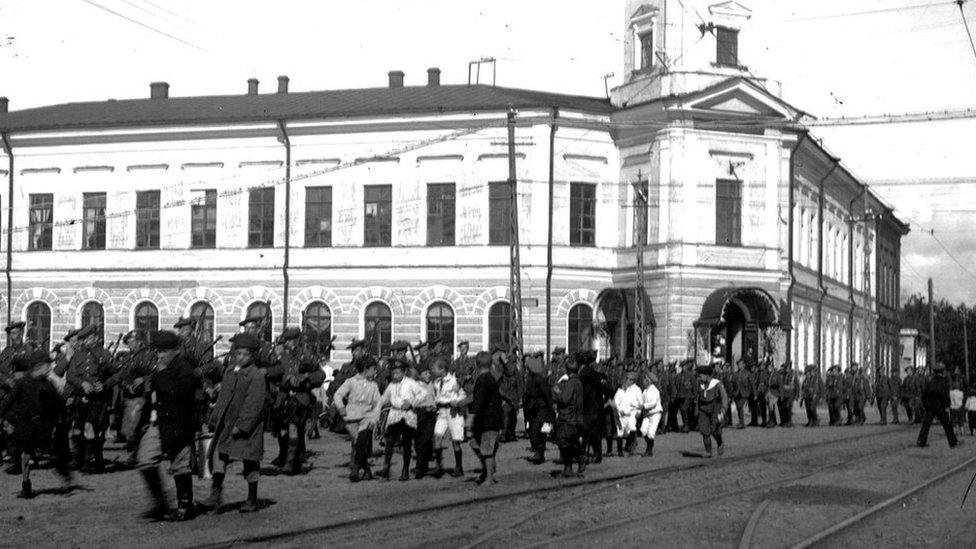
Royal Scots marching through Archangel in Northern Russia in June, 1919 on their way home
The world breathed a sigh of relief as the guns fell silent, marking the end of the First World War.
But for many Scots soldiers the conflict was not over.
On the day of the Armistice, November 11, 1918, a dawn attack on a company of Royal Scots left 18 men dead and 34 others wounded.
The enemy, who lost up to 30 men in the action, were Bolshevik forces, fighting in a forgotten war in northern Russia, which lasted until 1920.
Corporal Maurice Lumb, a sniper from West Yorkshire, was part of the action on November 11, and was ordered to deal with a Red marksman who had caused a number of casualties.
'Dangerous customer'
In his account 'Memoirs of a Sniper in Russia' he wrote: "My eye-sight being good I soon got his position weighed up. He also knew of my presence for he kept moving a yard or two.
"I realised it was a case of sheer survival and when a grey astrakhan hat appeared I took careful aim and scored a bulls eye, which got rid of a very dangerous customer. No further casualties were sustained from that source."
He added: "This day was the eleventh of November, 1918, but there was no armistice in that part of Russia. We had sustained a lot of casualties, but the enemy had sustained even more."
The war diary of 2/10 Royal Scots said: "The whole Company behaved in a most gallant manner during this action. Had the enemy been successful in his attack it would have been very disastrous."
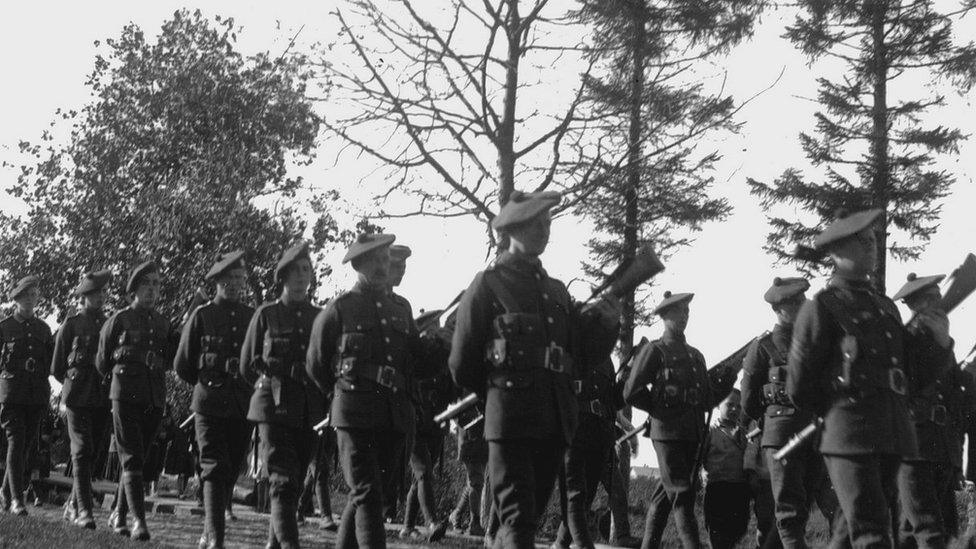
An escort party from 2/10 Bn Royal Scots at the funeral of an officer in Archangel
The Royal Scots were awarded the battle honour Archangel - one of only two regiments to be allowed to include the name on their colours.
Military Crosses - one of the highest honours for bravery - were awarded to three Royal Scots officers after the action and other decorations, including one from the White Russian commander, were given to NCOs and privates.
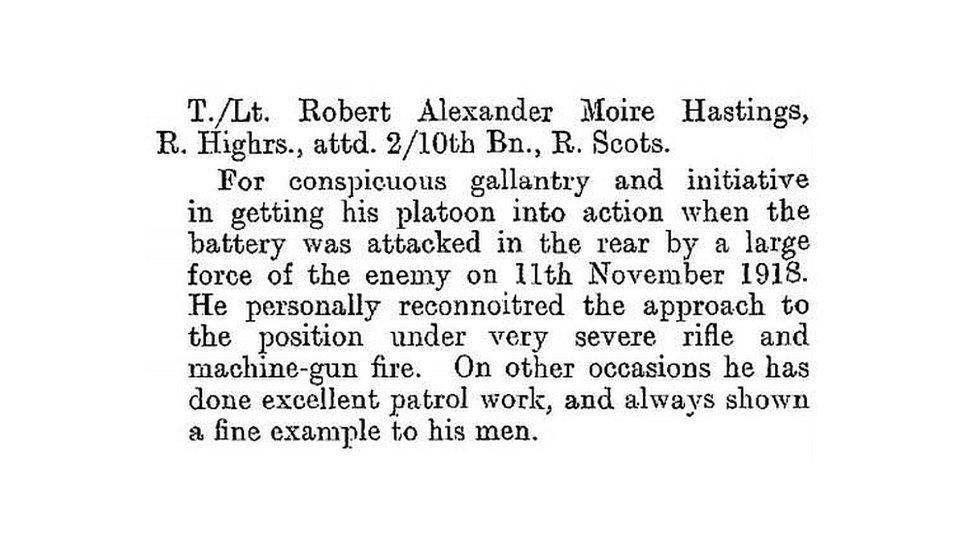
Temporary Lieutenant Robert Hastings was one of three recipients of the Military Cross after the action
The citation for temporary Lieutenant Robert Hastings read: "He personally reconnoitred the approach to the position under very severe rifle and machine-gun fire."
A task force of British, Canadians, Australians, French, Italians and Americans had been sent to Archangel in August 1918 to bolster forces opposed to the Bolshevik government which had seized power in the October Revolution the previous year.
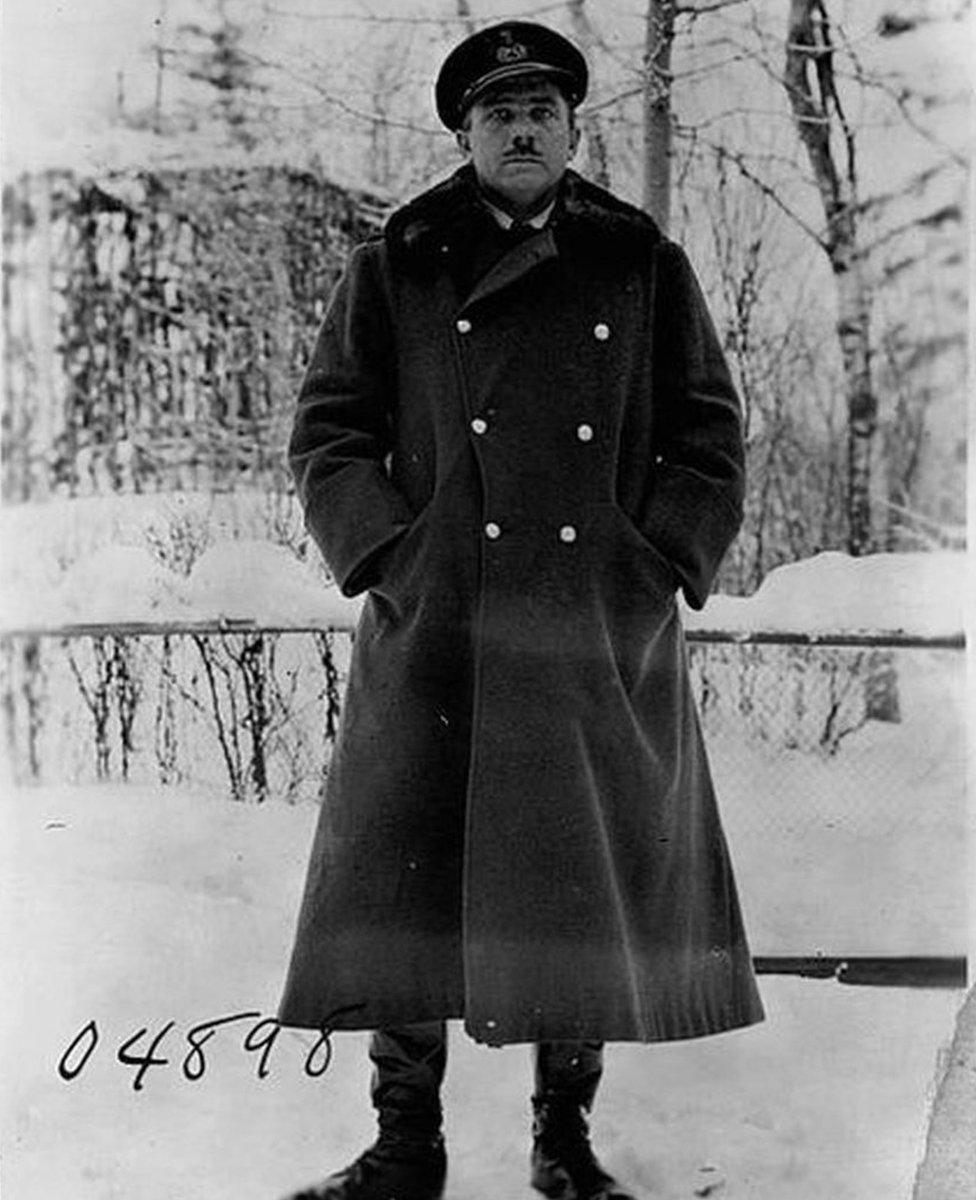
Edinburgh-born General Edmund Ironside led the intervention force in northern Russia
Apart from 2/10 Battalion, Royal Scots, the British troops included men from 2nd Battalion Highland Light Infantry and a detachment of 548 (Dundee) Field Company Royal Engineers.
The Allies felt the Bolshevik regime was a puppet of Germany and the intervention, commanded by Edinburgh-born Brigadier-General Edmund Ironside, was ordered to ensure the Germans could not move forces to the Western Front from Russia.
Military historian Paul Duckmanton said when the Armistice took place in France and Flanders, the troops in Russia had already been fighting, but the reason for being there were suddenly less clear.
"Some of them did struggle. A lot of the troops wondered why they were still there.
"There were a lot of mutinies by some of the forces, and there was a realisation there wasn't the interest from the public - or the will to carry on fighting longer term."
The Royal Scots battalion sent to Russia had spent the whole of World War One in the UK as a coastal defence force, and few of the men had any experience in fighting.
Most of them were classed as unfit for front-line duties.
Their task was to command the rivers and railway lines leading to Archangel and Murmansk, to prevent Germany from establishing a submarine base in northern Russia.
'Manned up'
Fighting was carried out in unfamiliar terrain against heavily armed Bolshevik forces.
Colonel Martin Gibson, a trustee of the Royal Scots Museum said they acquitted themselves well.
"The idea was to involve the Germans so they couldn't go and reinforce the Western Front, and isolate them. But they paid dearly for it.
"Reading the diaries from there, the commanding officer and other solders there, they manned up and they did extremely well in very difficult conditions with a huge number of enemy facing them."
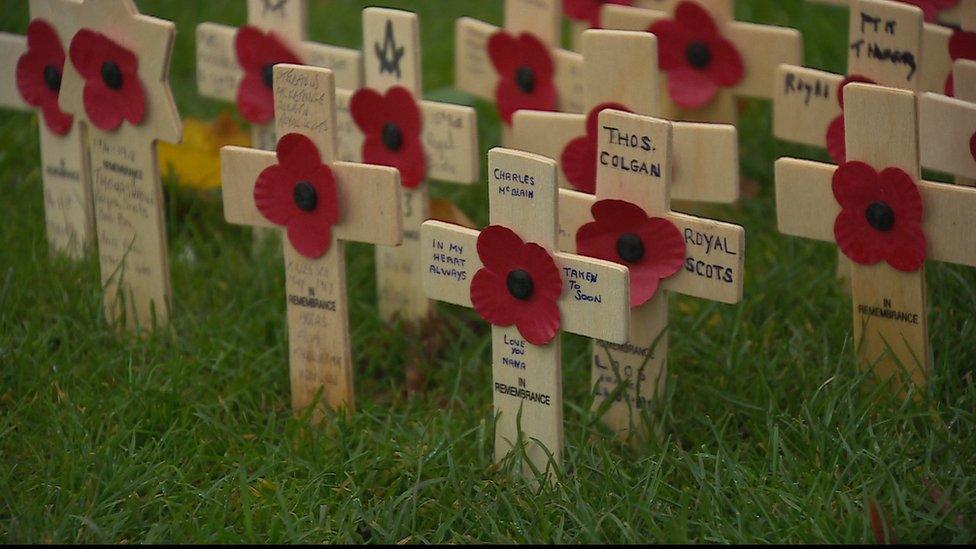
Commemorating the Royal Scots war dead in the Field of Remberance in Glasgow
Conditions were tough for the Scots, particularly when they heard fighting was over in France.
John Stewart, from Coatbridge, was 20 when the Armistice was declared.
In an unpublished autobiography he wrote: "Christmastime was fast approaching. In the meantime we had heard that the Armistice was signed on the Western Front in France - that raised our spirits, soon now we would be out of this Godforsaken country, but we were sadly disillusioned.
"I had my 21st birthday on the 20th day of December; my celebration as well as all my comrades was a tin of McConnachy Stew and some hard tack biscuits.
"The winter was now taking its toll. Numerous cases of frostbite and influenza added to our already beleaguered forces."
In all, British forces lost 37 officers and 217 men in the campaigns in Archangel and Murmansk, with a further 41 officers and 320 men being wounded in action before the campaign came to an end in 1920.
They had in effect been taking part in a civil war, siding with the White Russians against the Reds - the Bolsheviks.
Paul Duckmanton said that is part of the reason the intervention is so little known.
"It was felt it was embarrassing. It seemed to be a muddled policy," he said.